Table of Contents
Abstract 1
Introduction 2
Methods 3
Inclusion Criteria 3
Results 4
Multiple remedies 4
Case 203 4
Case 375 7
Case 719 9
Case 1147 12
Case 1176 13
Discussion 17
Acknowledgments 18
Abstract
Aim: This study reports on and summarizes the first five of the 55 cases of COVID-19 positive clients who sought homeopathic care for symptoms between March 2020 – December 2021 by a team of professional homeopaths working together in the United States.
This first part of the case series focuses on cases where more than two remedies were needed to move the case to resolution. Background: The clients in this series received tele-health consultations and individualized homeopathy interventions in an out-patient homeopathy clinical setting.
They were seen by individual professional homeopathy practitioners and students under supervision working together on the Homeopathy Help Network (HHN) in the United States.
Methods: COVID-19 positive individuals self-selected for individualized care for their symptoms using homeopathy. Cases for the series were hand-picked with the aim of being an average representation of the more than 2000 COVID-positive cases seen by members of the Homeopathy Help Network.
Cases were eligible for inclusion if the client tested positive for COVID-19, was seen by the practitioner to the resolution of symptoms, and the case had clear case notes on the progression of symptoms and remedy recommendations and reactions.
Results: Cases in the full compendium are grouped according to a predominant case feature: Multiple Remedies, Posology, Time Ill, Strange, Rare & Peculiar symptoms (SRP), Single Remedy Resolution, and Hospitalization.
At the time of writing this installment of the observational case series is part of an ongoing case series. The full compendium consisting of 55 cases has been split into nine publications grouped using the categories above. For further information about HHN, to make donations or to purchase the entire case series, navigate to: www.homeopathyhelpnow.com
Introduction
The aim of this case series is to report individual symptom and remedy details of positively-resolved cases of 55 symptomatic COVID-19-positive clients who used homeopathy as adjunctive care for symptom relief. The clients in this series received tele-health consultations and interventions in an out-patient online homeopathy clinical setting.
Clients were seen by individual professional homeopathy practitioners and students under supervision working together on the Homeopathy Help Network (HHN) in the United States (Note: only five student cases are included here). Cases included here span from March 2020 – December 2021 and represent clients across various regions in the United States as well as some clients from outside the US.
HHN is an ongoing volunteer working group of professional homeopathy practitioners, administrative volunteers, student practitioners under supervision, and independent researchers. It was created in March 2020 to respond to the urgent need of care for the burgeoning number of COVID-19 cases in the United States. All cases seen through HHN contribute to large-scale clinical-outcomes research designed to support international research in the clinical efficacy of homeopathy.
HHN clients receive individualized case analysis and remedy recommendation; no protocols are used by the team. Individualized homeopathy is intended to stimulate a self-healing response which reduces or removes symptoms. It helps those with symptoms move toward a stronger, dynamic state of health according to that person’s specific array of symptoms across their health history. [1]
In this system of healing, when treating individual illness associated with epidemic/pandemic disease – rather than in everyday individualized practice – the combined symptoms of a large group of people with the same condition has special importance and comes to define the ‘genus epidemicus’, a small cluster of homeopathic remedies understood to address the whole “energy pattern” of the epidemic disease “as if one person”. [2] [3] [4]
The HHN practitioners have committed to working closely together (and with colleagues across the world) to contribute to the identification and application of such a ‘genus’ through careful identification and collation of peculiar and common symptoms and their indicated remedies among the greatest number of cases possible.
It is understood that in different epidemic areas, various factors such as climate, collective emotional states, diet, virus strains, etc., impact how COVID-19 presents, which must be taken into account when considering an emerging set of genus remedies.
The cases collected in the full case series compendium are considered to be a fair representation of the more than 3000+ COVID-positive individuals who received care by the HHN team. Care was taken to not only include the stellar cases, but to give a more average portrayal of the kinds of cases seen across 21 months, March 2020 – December 2021.
This makes for a wide variety of cases; some in the series show progression through acute phases with new symptoms emerging during care while others resolve more quickly. Follow up consultations were sometimes given as soon as an hour after the remedy was taken in severe cases, or as long as weeks later in situations of poor follow up communication from clients.
Two cases include care upon reinfection months after resolution of first infection. Another important feature of the team’s work is the limited availability of some first or even second-choice remedies. Where possible, notes from the practitioner about using second or third-choice remedies are included.
As the work of the team developed over some months into the pandemic, a handful of ‘genus’-potential remedies were emerging, and sometimes, these did not repertorize well, as may be evident in some case notes.
Remedies were recommended in centesimal potencies either in dry or liquid doses. There is a wide variety of posology strategies including number of pellets, repetitions and liquid preparations. In one case, the client only had local access to remedies in liquid preparation in spray bottles.
While other case studies exist and are forthcoming, the authors hope that the full case series of this scale can be a valuable contribution to the important work at hand to help mitigate the widespread suffering of so many during this pandemic while elevating case examples that may give shape to our emerging genus epidemicus.
Methods
Self-selecting individuals who were COVID-19 positive or probable navigated to the HHN web portal and submitted an online intake form for assistance with their symptoms. In initial and subsequent consultations with the assigned practitioner (conducted on phone or video conferencing software, as appropriate to the client’s condition), additional relevant clinical data was added to the case notes. These included presenting symptoms, COVID-19 status at intake, other types of modalities used, comorbidities, remedy details, individual remedy intervention outcomes, and outcome at final contact.
Inclusion Criteria
A case series is, by definition, observational and non-controlled. Cases were hand-picked with the aim of showcasing a wide variety of cases across a range of: 21 months, geographic locations, team practitioners, severity of illness and health status prior to infection. Cases were considered for inclusion in the Case Series only if they met the following criteria:
- Tested COVID-19 positive (Reverse transcription polymerase chain reaction (RT-PCR) positive for 2019-novel Coronavirus (2019-nCoV), Serology test positive for IgM/IgG (immunoglobulin M/immunoglobulin G) or Rapid Antigen Test specific for COVID-19);
- Resolution of acute symptoms at final contact with client;
- Clear case notes detailing symptoms, remedy recommendation, client compliance and the stages of resolution. (Note: cases with unclear remedy response, sometimes due to poor communication from clients or concurrent use of prescription or off-label medications were not included.)
Each case presented here outlines client symptoms throughout the intervention period to full positive resolution along with remedy and posology recommendations. Acute case-taking is already a stream-lined process in which only acute symptoms that vary from the client’s chronic health state are noted, and case notes were further distilled for this case series. Where available, repertorizations of symptoms are included using Synthesis Treasure Edition Repertory 2009V last updated in RadarOpus 2.2.16.
Results
Case Series Part 1 focuses on multiple remedies: cases which required more than two remedy recommendations to move acute symptoms to resolution.
Subsequent cases in the full compendium are grouped by these additional features:
- Posology: cases which presented a unique perspective on remedy doses needed;
- Time Ill: cases in which clients were ill for 14 days or longer before receiving the HHN homeopathic intervention;
- Strange, Rare & Peculiar (SRP): cases which included standout symptoms not often reported in conventional medical outlets. (Note: the SRP symptoms included in these cases are not limited to those presented here; they were seen across numerous cases, therefore holding more epidemiological importance);
- Single Remedy Resolution: cases which resolved with use of one remedy only; and
- Hospitalization: cases in which clients received homeopathic intervention while hospitalized.
As a consequence of this being a case series involving the cherry picking of cases with no controls, this compilation is in no way making claims about homeopathy, its efficacy in COVID-19 or suggesting homeopathic remedy guidelines for COVID-19 symptoms.
Multiple remedies, Part 1
Case 203
The client was a 35-year old man with no chronic diagnoses and no prescription medications at intake. He was symptomatic for two days with the following:
1. Very fatigued with little ability to do any activity, better lying in bed
2. Fever of 100.4 with chills. Feels especially cold in back and arms with perspiration on hands
3. Congestion, worse right side of nose
4. Hoarse voice
5. Slight body aches
6. Frequent headaches, dull pain on right side temple

Fig. 1 Repertorization of Case 203
RX: Bryonia alba 200C taken once at night and the following morning. Follow up planned for the following day. Practitioner will look for signs of Phosphorus or Spigelia in the next 24 hours.
Follow up #1 the following day after taking remedy as recommended:
1. Body aches are worse
2. More chills, mostly in the back, temp 101.5
3. Same general fatigue – even cup of tea feels heavy
4. same hoarseness
5. same congestion
6. same headache
7. sweating on hands went away
8. Felt some relief after first dose last evening
RX: Bryonia alba 200C, 1 dose. Follow up in three hours.
Follow up #2 three hours later after taking remedy as recommended:
1. Headache went away and is now returning
2. sweating on hands returning
RX: Bryonia alba 200C, 1 dose. Follow up in a few hours.
Follow up #3, a few hours later after taking remedy as recommended:
1. Head pain constant now
2. body feels very cold, chills on legs and arms and shivers on arms
RX: Phosphorus 200C, 1 dose. Follow up in a few hours. (Practitioner would have preferred Spigelia, but not available.)
Follow up #4, a few hours later after taking remedy as recommended:
1. Head pain much better
2. Lots of sweating and fever is down to 100.5
3. Body aches and chills are gone
RX: Repeat Phosphorus 200C every 3-4 hours. Stop if anything gets worse. Follow up planned for the following day.
Follow up #4, the following day after one additional dose of Phosphorus:
1. head pain ok
2. no chills – feel hot
3. minor body aches
4. very thirsty in night for water and fruit- juicy and refreshing
5. very weak in night, like legs would give out when going to bathroom
6. dream/delusion- between sleep and wakefulness: vision of someone cutting the bed. Where should I go, so this person cuts next to me or over me? I felt I should be on the right side of the bed.
7. today every symptom comes and goes: headache, chills, body aches, weakness, fatigue- comes in waves.
8. Feel best in day, worse at night.
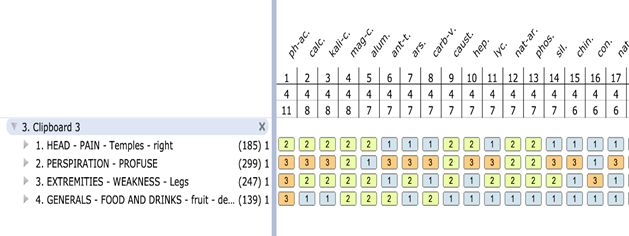
Fig. 2 Repertorization of Case 203
RX: Ozone 1 M, 1 dry dose, followed by liquid doses as needed. Stop if anything gets worse. Follow up planned for the following day. Phosphoricum acidum is back up.
Follow up #5, the following day after one dry dose and one liquid dose:
1. yesterday fever went up to 102.7 after taking remedy, but headache and energy were slightly better
2. today woke up with worse headache, which aggravated by liquid dose this morning, worse moving eyes; took pain medication
3. some chest tightness following liquid dose this morning
4. improved energy after liquid dose this morning
5. strong cravings for cold juicy fruits and ice
6. mouth is dry no matter how much he drinks
7. fever at 101F
RX: no remedy; wait until pain medication wears off, then reassess in afternoon
Follow up #6, later the same day:
1. headache and tired, weakness significantly improved
2. the best he’s felt since being sick
RX: Ozone 1 M, liquid doses only as needed
Follow up #7, the following day after taking no remedy:
1. headache mild
2. coughing slightly more
3. fever between 100-101F
RX: Ozone 1 M, liquid doses only as needed, if cough becomes worse/more dry, if fever or body aches or energy worsen.
Follow up #7, the following day after taking no remedy:
1. only minor cough remains, much less than yesterday
2. no tiredness/weakness- feel better in every other way
RX: N/A, case closed.
Case 375
The client was a 61-year-old woman with pre-existing diagnoses of Crohn’s Disease and interstitial cystitis and 6 current or recent prescription medications at intake. She was symptomatic for 2 days with the following:
1. Headache – top part of head, constant, throbbing, dull ache, pain 5/10, a little down toward eyes
2. Fever – 99.9 degrees Fahrenheit, with a high of 101.2 degrees Fahrenheit
3. Dry cough in throat, worse for talking
4. Thick yellow phlegm in sinuses, some phlegm in throat
5. Ear pressure – full feeling
6. Body aches – upper back and shoulders
7. Fatigue – energy level 4/10
8. Tingling sensation in fingertips, hands feel “pruney” as if they had been in water for too long
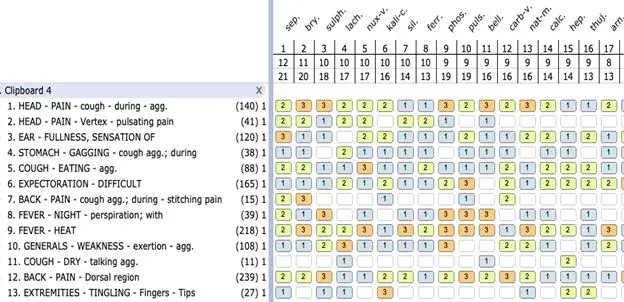
Figure 3 Repertorization for case 375
RX: Lachesis 200C 2 dry doses, then in water 3x/day
Follow-up #1, 2 days after initial intake:
1. Started feeling better yesterday morning
2. Headache diminished
3. Cough improved
4. Yellow phlegm gone
5. Fever is intermittent at 99 degrees Fahrenheit
6. Ear pressure gone
7. Body aches significantly diminished
RX: Continue Lachesis 200C at least 3 doses, more as needed.
Follow-up #2, 3 days later:
1. Fever runs to 99.3 degrees Fahrenheit once a day
2. Minor cough
3. Body aches gone
4. Headache gone
5. Energy much improved
RX: Continue Lachesis 200C with 4-5 doses/day for 2 days, then reduce as symptoms improve
Follow-up #3, 3 days later:
1. Started running a fever over weekend – 99-100 degrees Fahrenheit
2. Woke in cold sweat, fever was still 99 degrees Fahrenheit (99.5 – 99.9)
3. Symptoms worse around 9pm
4. Chills- only once
5. Perspiration at night – whole torso
6. Dry, unproductive cough – painless and still in throat
7. Nasal discharge – clear, slight
8. Mild headache
9.Intense hip pain (yesterday)
10. Taking recommended remedy every 2 or 3 hours
RX: Phosphorus 200c
Follow-up #4, 2 days later:
1. Slight cough
2. Mild headache- top dull ache & behind back of right ear 4/10
3. Fever gone
4. Woke up soaked with perspiration
5. Energy: slightly improving
6. Fingertips now feel normal
7. Yesterday took four doses of remedy, today only one so far
RX: Continue Phosphorus, 4-5 x/day
Follow-up #5, 2 days later:
1.“I feel like a human being again!”
2. Fever-free for two days
3.Cough improved, but still tight and dry
4. Still waking with perspiration, but less frequently
5. Took recommended remedy every two hours yesterday
RX: Continue Phosphorus, 4-5 x/day
Follow-up #6, 3 days later:
1. Have been experiencing more coughing fits, which are worse for talking and eating and occasionally have clear expectoration
2. Cough is sometimes gagging, and sensation of a ball in throat when coughing
3. Head and rib pain from coughing
4. Scratchy sensation at throat pit
5. Thirst – average desires room temperature
6. Pain in ribs on left side and middle back
7. Wants to be LEFT ALONE
8. Have been taking recommended remedy 5x/day
RX: Stannum 200C dry dose 2x in 1 hour, then in water 4x/day
Follow-up #7, next day:
1. Headache that explodes with each little cough – getting worse
2. Increased perspiration
3. Last night the remedy helped cough and headache right away – took 2 dry doses 1 hour apart and took 4x today. No improvement after the last dose. Cough is much tighter now.
RX: Bryonia alba 200C dry dose 2x in 1 hour, then in water 4x/day
Follow-up #8, 2 days later:
1. No headache today
2. Cough improved, more productive
3. No energy, thought I’d faint in shower today, a little light-headed
RX: Bryonia alba 200c in water 4x/day
Follow-up #9, 3 days later:
1. Symptoms are basically all gone
2. Coughing – gone
3.Energy – good
4. Stopped remedy yesterday morning
RX: N/A, case closed.
Case 719
The client was a 62-year-old female with a history of high blood pressure, a condition for which she was taking prescription medication at the time of intake. She had been symptomatic for 3 days with the following:
1. Headache, starts with burning in temples, eyes, and nose, then intermittent headache in frontal area and temples
2. Dry tickling cough, worse in the morning and evening
3. Sneezing that burns in nose and eyes
4. Blowing nose causes burning pain at the back of nose, eyes, temples
5. Muscular weakness in legs and arms as well as general weakness – client is exhausted by the least exertion. Energy level at 50% of normal.
6 Burning pain at top of thigh in hip area on movement
7. Burning pain in different spots
8. Back of tongue and both sides of mouth have metallic taste
9. Appetite decreased
10. Slight light headedness
11. Dreams of dead relatives
12. Woke last night with sharp pain on the front right side between hip and rib cage. Pain stopped on movement but returned intermittently
13. Intermittent stomach pain
14. All symptoms intermittent
15. Client noticed some improvement today with 3 doses of Phosphorus 30X (self-prescribed)
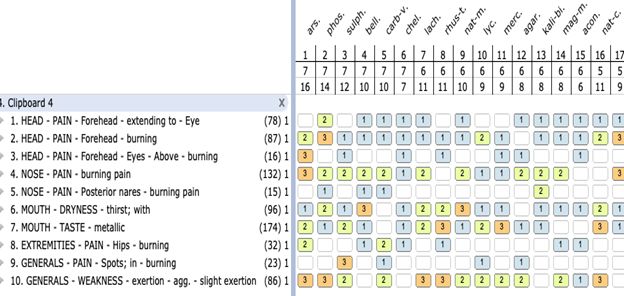
Figure 4. Repertorization 1 for Case 719
RX: Phosphorus 200C, 2 dry doses, then water doses 3-5 times daily
Follow-up #1, next day:
1. Client continued taking Phosphorus 30X while waiting for arrival of 30C and 200C potencies.
2. General weakness improved, muscle weakness much improved
3. Metallic taste resolved
4. Burning pain in spots disappeared
5. Headache continues with same intensity as yesterday
6. Shooting pain in back, right side, and lower ribs
7. Diarrhea
RX: Phosphorus 200C, liquid doses 3-5 times daily
Follow-up #2, 3 days later:
1. Client received Phosphorus 30C yesterday
2. Sense of smell absent since yesterday
3. Weakness and fatigue continue
4. Headache almost resolved
5. Nasal discharge – hot sensation when blowing nose
6. Appetite absent
7. Shooting pains resolved
RX: Phosphorus 200C, liquid doses 4 times daily
Follow-up #3, next day:
1. Energy improved to 80% of normal
2. Nasal discharge stopped
3. Sense of smell still absent
RX: Phosphorus 200C, liquid doses 3-4 times daily for 2 more days
Follow-up #4, next day:
1. Client feels a buzzing sensation under her skin all over her body.
2. Brain fog
3. Pain in back and neck, sitting upright motionless ameliorates
4. Sharp pain under left shoulder blade radiating to neck with movement
5. Energy level is 50% of normal
RX: Ferrum phosphoricum 30C, in water 3-5 times daily
Follow-up #5, next day:
1. Headache on waking, returning at 3-4pm. Burning and bruising pain behind ear radiating to forehead and eyes with varying intensity
2.Burning sensation in legs and calf on both sides of body
3.Squeezing upper stomach pain from 11am – 12pm.
4.Normal appetite and thirst
5. Energy decreases at 4-5pm, client feels sleepy and weak
6. Soft stools with periodic urgency. Passing stool feels incomplete.

Figure 5. Repertorization 2 for Case 719.
RX: Phosphorus 200C, liquid doses 3-4 times daily
Follow-up #6, 4 days later:
1. Symptoms nearly gone.
2. Energy levels are back to approximately 90% of normal
3. Client has not taken the remedy for 1 day
RX: N/A, case closed
Case 1147
The client was a 28-year-old female with no reported pre-existing conditions or prescription medications. She had been symptomatic for 4 days with the following:
1. Fever – woke up with 102.7 degree Fahrenheit temperature then decreased to 100 degrees Fahrenheit after taking ibuprofen
2. Cough, worse for talking, pain in center of chest on coughing. Easy expectoration of yellow and white mucus, consistency of egg yolks. Harder to breathe after coughing.
3. Body aches – minor, around back
4. Decreased energy (approximately 60% of normal)
5. Thirst increased, but drinking room temperature/cold water worsens the cough
6. Appetite slightly decreased
7. Client wants to be left alone to sleep, told her mother “leave me alone!”
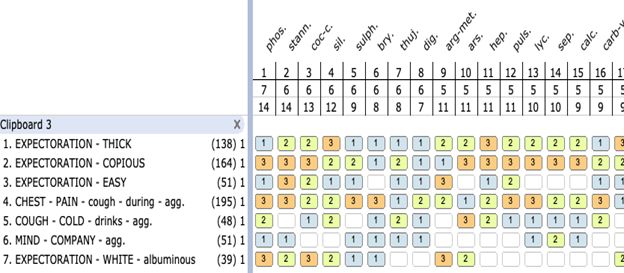
Figure 6. Repertorization of case 1147.
RX: Bryonia alba 30C, 1 dry dose followed by 3 water doses.
Follow-up #1, next day:
1. Client feeling a bit better
2. Cough alternates between wet and dry
3. Energy slightly better
4. Client feels a bit better after taking the remedy
RX: Bryonia alba 30C in water every 3-4 hours
Follow-up #2, 3 days later:
1. Cough continues with copious yellow or white gooey, stringy expectoration. Taking remedy loosens the phlegm.
2. Last night client had an extremely dry mouth and a dry cough
3. Yesterday client felt depressed
4. Energy improved to 75-80% of normal
5. Appetite returned last night
6. Diarrhea stopped 2 days ago after having it all week
RX: Antimonium tartaricum 30C, 1 dry dose, then water doses every 3-4 hours, or as needed.
Follow-up #3, 3 days later:
1. Client hasn’t taken a remedy in 3 days, feels great.
RX: N/A, case closed.
Case 1176
The client was a 39-year-old female with pre-existing fibromyalgia, anxiety, depression, hives, and constipation and prescription medication for depression at the time of intake. She had been symptomatic for 11 days with the following:
1. Body aches all over body but worst in arms and legs
2. Fever, no perspiration
3. Mostly dry cough with thick yellow expectoration and pain in chest from coughing.
4. Nasal congestion with thick yellow mucus
5. Loss of taste and smell
6. Fatigue
7. Appetite diminished
8. Thirst for cold water
9. Sore throat, tickle in throat
10. Better for laying down, body aches and fatigue worse for movement
11. Slight constipation (a chronic symptom)
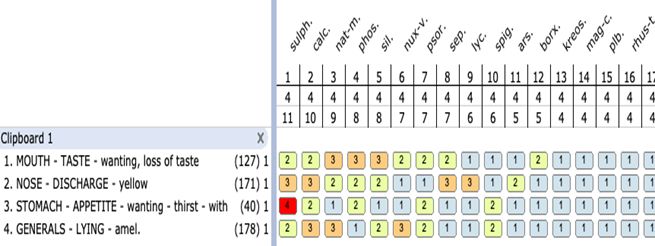
Figure 7. Repertorization 1 for Case 1176.
RX: Phosphorus 200C, 1 dry dose followed by liquid doses as needed. (Note: Client had a recent non-COVID acute that resolved with Phosphorus)
Follow-up #1, same day:
1. Body aches improved after remedy.
RX: Phosphorus 200C, liquid doses as needed
Follow-up #2, 2 days later:
1. Cough and chest pain improved
2. Body aches returned but improving as day goes on
3. Abdominal pain after eating with gas
4. Fatigue
5. Sense of taste and smell starting to return
6. Constipation (chronic symptom)
RX: Phosphorus 30C, but since client does not have it, then dilute Phosphorus 200C in 2 oz. water, then take 1 drop and add to 8 oz water. Take 1 sip.
Follow-up #3, next day:
1. Body aches, fatigue unchanged
2. Abdominal pain last night and this morning with constipation (chronic)
3. Lost taste unchanged
RX: Phosphorus 200C, 2 pellets in 2 oz water, succussed, one drop
Follow-up #4, next day:
1. Cough improved
2. Fatigue improved
3. Body aches improved
RX: Phosphorus 200C in 2oz, succussed. Repeat every 3 hours.
Follow-up #5, next day:
1. Increased body aches in the morning
2. Cough started
RX: Phosphorus 200C in 2oz, succussed. One dose.
Follow-up #6, same day:
1. Body aches improved
2. Cough unchanged
RX: Phosphorus 200C, dry dose
Follow-up #7, next day:
1. Cough greatly improved after dry dose of remedy yesterday. Cough restarted today after breakfast.
2. Diarrhea last night
3. Body aches, worse in the morning
4. Fatigue
5. Sense of taste returning
6. Slight headache
7. Intermittent abdominal pain
8. Light headedness in shower
RX: Phosphorus 200C in 2 oz, 2 drops under the tongue. Repeat 2X per day for 2 days.
Follow-up #8, next day:
1. Cough, headache, chest pain, and body aches returned this morning on waking. Client suspects chronic fibromyalgia is responsible for body aches, since it is raining, which typically makes her chronic symptoms worse.
RX: Phosphorus 30C in 2 oz, repeated frequently
Follow-up #9, 3 days later:
1. No improvement
2. Client started taking Ferrum Phosphoricum cell salts.
RX: Aconitum napellus 200C, dry dose
Follow-up #9, next day:
1. Body aches, worse in afternoon, evening, and standing up. Better in morning, sitting or lying down.
2. Craving sweets like cookies, cake, ice cream.
3. Thirst increased, desires cold water.
4. Taste not yet restored.
5. Cough in the throat feels like a tickle, worse in morning or when standing, Better when sitting or lying in the afternoon.
6. Abdominal pain from middle to top of stomach, cramping pain, occasional gas. Worse standing, eating, in the afternoon and in the evening. Better sitting or lying down, bending over, in the morning.
RX: Calcarea carbonica 200C, 1 dry dose (Note: Client only has 30C potency)
Follow-up #10, same day:
1. No change in symptoms after 3 hours
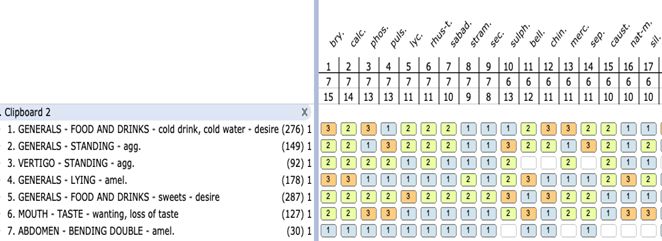
Figure 8. Repertorization 2 for Case 1176
RX: Bryonia alba 200C (or 30C is client has it), dry dose. Repeat if helpful.
Follow-up #11, 3 days later:
1. Client felt better for 2 days, then woke up this morning with body aches, chest pain, stomach ache
RX: Hold. No remedy.
Follow-up #12, next day:
1. Client felt better yesterday afternoon and evening.
2. This morning client woke up without a stomach ache, other symptoms improved.
RX: Bryonia alba 30C, in water, succussed, 1 dose.
Follow-up #13, next day:
1. Client took Bryonia alba 30C in the morning, then started on Bioplasma in the afternoon
2. Yesterday irritable – yelling at animals. Today depressed. Hard to concentrate on work – can’t think.
3. Menses expected in 2 days, client usually does not get premenstrual syndrome but has been very irritable and some cramping
4. Constipation (chronic) – last bowel movement was last week. Constipation worse for the last few months
5. Body aches improved – feels more like client’s chronic state
6. Allergies worse
7. Sleep poor
8. Chest pain gone
9. Stomach pain at top with sternum
10. Fatigue slightly improved
11. Taste and smell are approximately 50% of normal
12. Vertigo improved
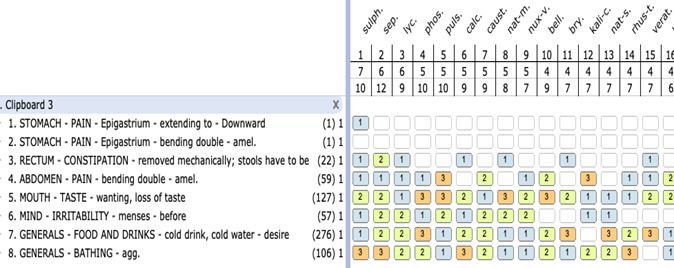
Figure 9. Repertorization 3 for Case 1176.
RX: Sulphur 30C in water, one dose
Follow-up #14, next day:
1. No change in symptoms
RX: Sulphur 30C, one dry dose.
Follow-up #15, 28 days later after having taken remedy as recommended:
1. Chest pain improved
2. Body aches improved
3. Chronic symptoms returning
4. Sense of taste returned but not fully
5. No remedy in a month
RX: N/A, case closed. Transition to chronic care
Discussion
Through the curation of the case series, we have identified three stand-out elements that deserve special attention.
Firstly, this case series reflects the work of homeopaths working closely together as a team. Team members met weekly to discuss cases and closely tracked emerging patterns of symptoms and homeopathic remedy responses.
While there is variety in remedy choice and posology evident across the cases presented here, there is a unifying alignment to Hahnemannian epidemiologic theory and guidelines. Moreover, the team understood each case as being a piece of a larger puzzle, with potentially profound insights to offer to the larger understanding of the infectious disease and the development of our ‘genus’ of remedies.
Secondly, case notes and team discussions highlighted clients’ limited access to first-choice remedies. While operating a decentralized outpatient telehealth clinic offers innumerable advantages, this is one disadvantage seen consistently through the work of the team.
While many of the cases presented here resolved very well with more easily-accessed remedies, lack of access to lesser-known remedies became a limitation for team members wishing to recommend these ‘genus’-potential remedies more often than was possible.
An important question emerges: when an urgent need for lesser-known remedies arises in the midst of a public health crisis, what options exist (or need to be developed) for agility in stocking needed remedies in shops across a large geographic area?
Thirdly, it is noted that cases of vaccinated individuals were not included in this case series because it was a minority number which did not represent the larger sample in this date range. The majority of cases included here were taken before vaccination was more widely available. The clinical outcomes of vaccinated individuals seeking support from the team warrants review in a subsequent paper.
Acknowledgments
Special thanks to the very talented and generous practitioners and students who donated their time to serve on HHN whose cases are included in this broader compendium:
Denise Straiges, CCH, RSHom(NA)
Johanna Antar, CCH, RSHom(NA)
Kelly Callahan, CCH, RSHom(NA), PCH
Parker Pracjek, CCH
Rebekah Azzarelli, CCH
Rachel Bongle, CCH
Amy Baglivio, CCH
Meg Smith, CCH
Tanya Kell, RSHom (NA)
Beth Goodwin, CCH, PDHom (UK)
Peggy Chipkin, RN, FNP, CCH, RSHom(NA)
Tracy Loveless
Elizabeth Thackery, student in supervision
Rachael Doherty, student in supervision
Molly Erlinger, student in supervision
Additional thanks to the dozens of student and community volunteers who have given time and talent to the Administrative and Practitioner team, allowing HHN to function smoothly and effectively.
[1] Gray, A. (2019). Method: Exploring the Breadth, Context and Application of Different Clinical Approaches in the Practice of Homeopathy. B. Jain, Delhi.
[2] Ullman, D. (1991). Discovering homeopathy: medicine for the 21st century, North Atlantic Books.
[3] Chappell, P., & van der Zee, H. (2012). Homeopathy for Diseases. Haren, The Netherlands: Homeolinks Publishers.
[4] O’Reilly, W. B. (Ed). (1996). Organon of the medical art by Dr. Samuel Hahnemann. Birdcage Books.



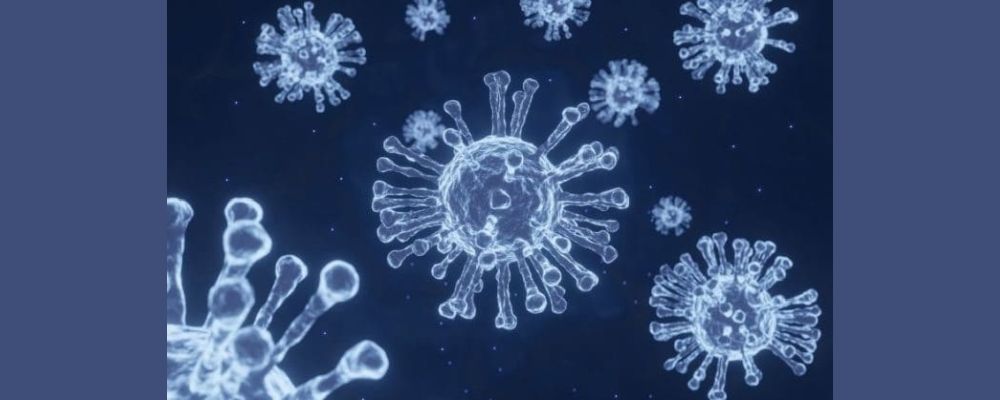

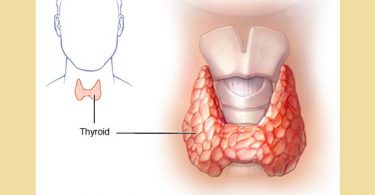
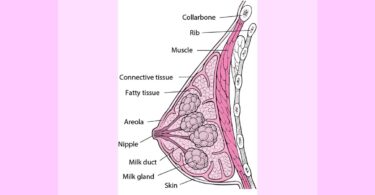
Love the awesome work here. In particular really love your overall effort to bring outcomes research to homeopathy tied to an educational system. This is sorely needed in our training/education. Excellent work!